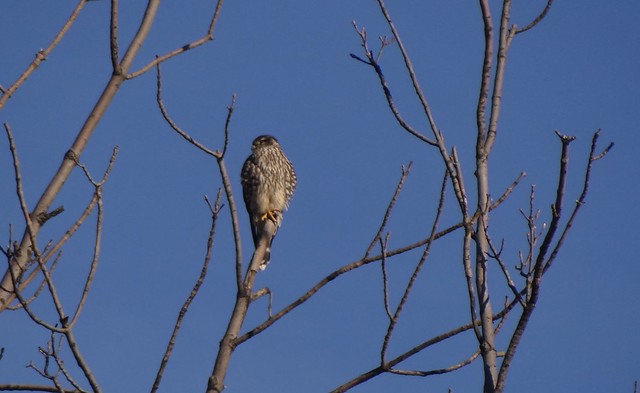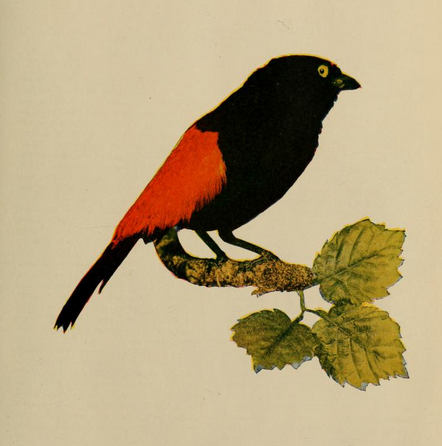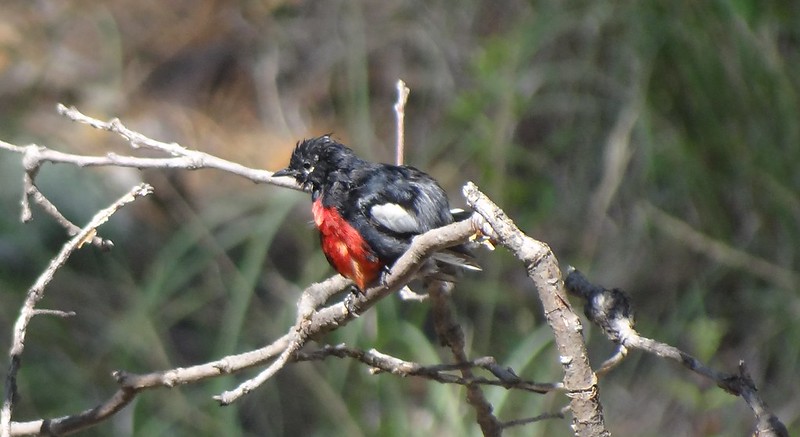One of my favorite places and one of my favorite place names — but Sowbelly wasn’t especially Prius-friendly the other day after the snow. So we took just a quick, chilly walk into the top of the canyon before heading west.
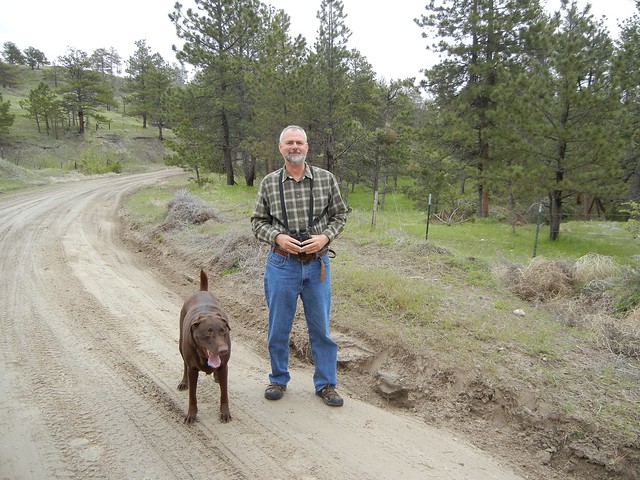
It was quiet up there, a circumstance that only convinced me there were really great birds down lower; but it’s hard to complain about fences lined with mountain bluebirds and Brewer’s blackbirds.
A distant Pheucticus song was neatly identified when a male black-headed grosbeak flew in to investigate our presence; both species occur in spring on the Pine Ridge, and — confession time — I can’t consistently tell the songs apart, and these ears of mime don’t always pick up those chip notes at a distance.
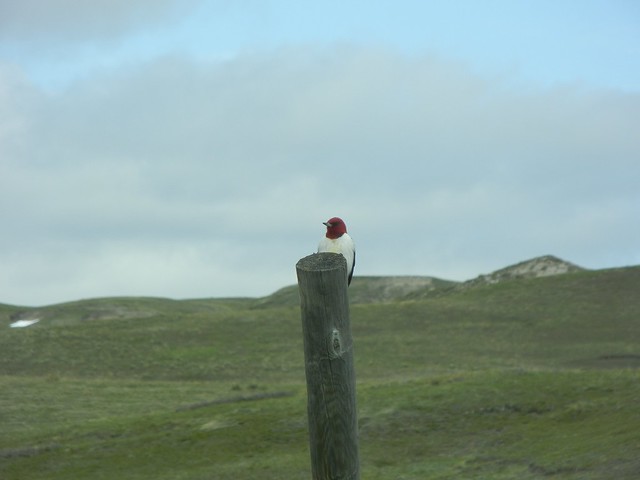
We were hoping for Lewis’s — it’s just time for that species to arrive — but had to content ourselves with the even more stunning red-headed woodpeckers; the bird is common all across Nebraska, wherever there are trees or fence posts, but it’s still a bit disconcerting to see it against a background of shortgrass prairie and buttes.
And even more disconcerting to look down the fence and see a Cassin’s kingbird.
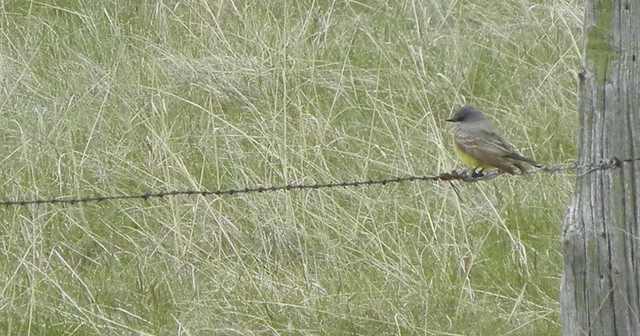
These no-longer-quite-so-southwestern tyrants breed in the upper canyon (and even farther north into Dakota, if I remember right), but I’d resigned myself to their late arrival when this one suddenly appeared. Who knows — this may have been the first of its species to make it to Nebraska this year. And it couldn’t have chosen a more beautiful place to land.


